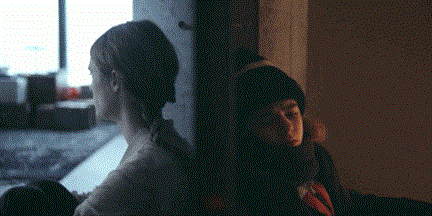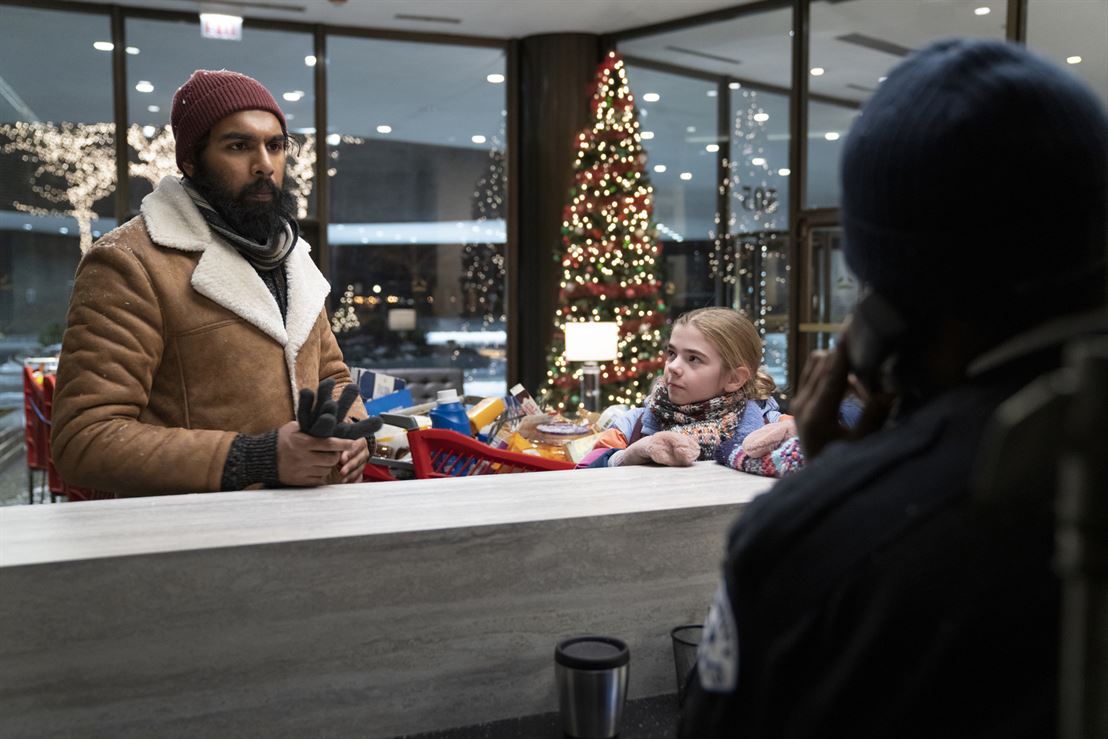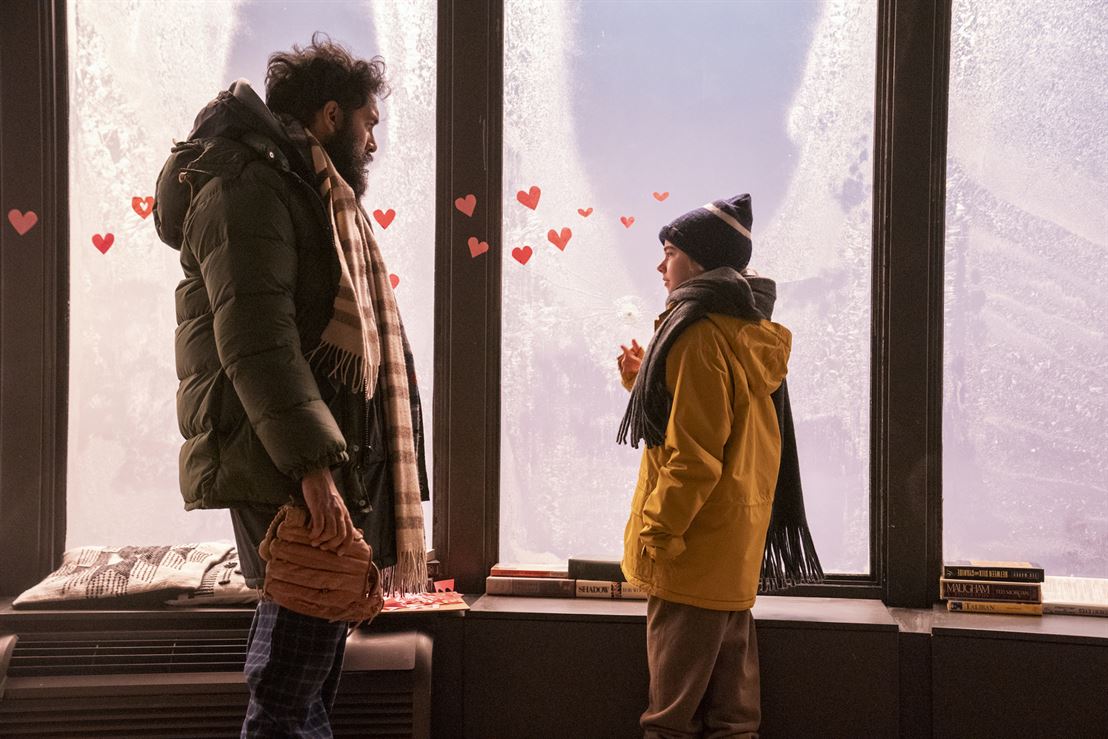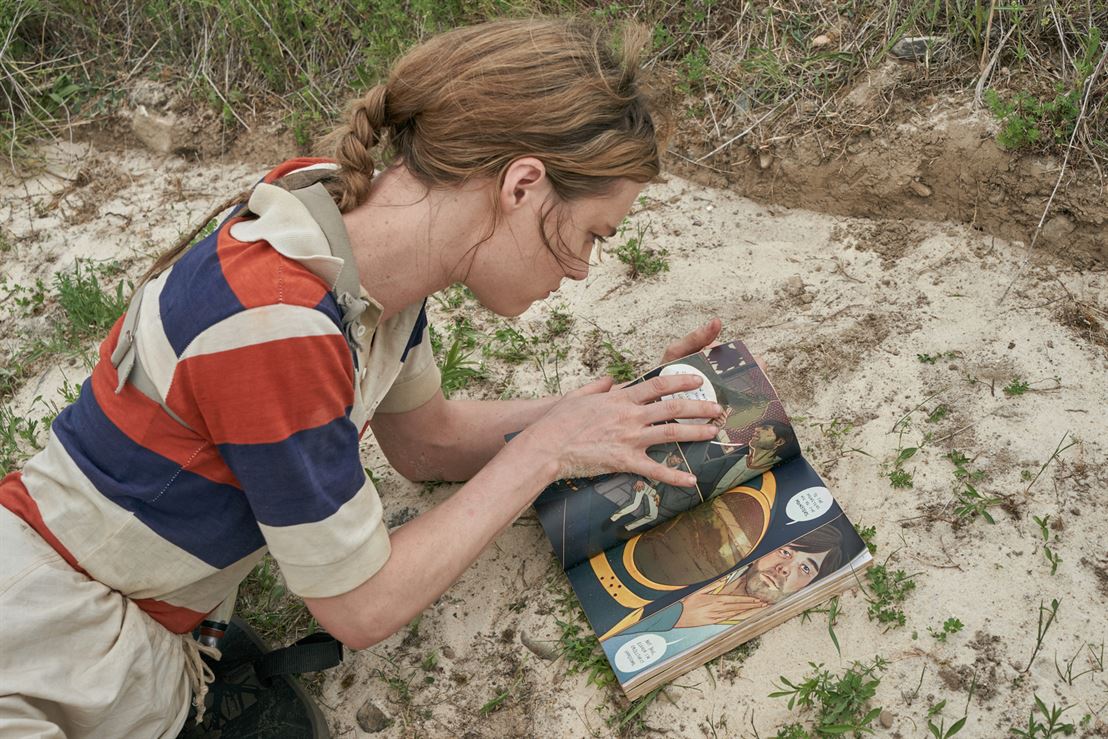“Station Eleven,” HBO Max’s newest limited series that released its final episode on Jan. 13, is unlike any other post-apocalyptic story you’ll ever see.
The show begins with a performance of “King Lear” the day a mass flu pandemic spreads and wipes out the majority of civilization. “Station Eleven” mainly focuses on Kirsten Raymonde, a theatre savant played by Matilda Lawler in her younger years after the pandemic breaks out and Mackenzie Davis in her adult years, 20 years later.

Older Kirsten, played by Mackenzie Davis (left), relives a trauma being experienced by younger Kirsten, played by Matilda Lawler (right).
Photo courtesy of HBO Max
The series’ beating heart is the relationship between Kirsten and Jeevan Chaudhary, played by Himesh Patel, who is in the audience on the night of the “King Lear” performance. Though he is not a doctor and has no idea what to do, he rushes on the stage when he notices the lead actor, Arthur Leander, played by Gael García Bernal, is having a heart attack.
Jeevan proceeds to help Kirsten when she can’t get in contact with anyone she knows. This introduction to his character leads us to immediately fall in love with this down-on-his-luck man with a good heart. It is also a perfect, inciting incident for the series as a whole.
The storytelling in “Station Eleven” is far from linear. The show starts through the eyes of a certain character only to not focus on him again until episodes later. The viewer is left with heaps of questions episode to episode, forced to ride the wave of unexpected protagonists and surprising plot reveals.
The story itself is strange and mysterious, and it takes a bit for the viewer to notice all the puzzle pieces that have been set up, but they’re clear once they collide and redefine all that came before.
This divide between past and present is one of the show’s most defining qualities. Without it, some of the most profound character moments wouldn’t work, but it also feels a bit disjointed and clumsy at points. It’s a bit of a mess in structure, but surely still is a wonderful mess.

Jeevan (Patel) and Kirsten (Lawler) find shelter on the first night of the apocalypse.
Photo courtesy of HBO Max
The show itself is beautiful to look at. The cinematography by Steve Cosens, Daniel Grant and Christian Sprenger brings both halves of this show to life, from the cold and unsettling pre-pandemic moments to the chaos of the immediate aftermath, to the quiet and peace that comes from nature having taken over 20 years later.
The direction from all the show’s directors is great with the work of Hiro Murai (from “Atlanta” and “Barry”) being a particular highlight.
The biggest thing this show exemplifies is completely unintentional, given it was based on a 2014 novel and began filming in January 2020. “Station Eleven” is a perfect allegory for the coronavirus (COVID-19) pandemic.
The pandemic in this show is sudden and throws the world into chaos. These characters are dealing with horrific loss and trauma, but they find a way to care for each other. Finding a new normal is hard, and letting go of the past is nearly impossible, but they find a way.
In the show, art thrives and brings light into people’s lives.
The relationship between art and humanity is one of the strongest elements of “Station Eleven.” The show’s namesake is a graphic novel about a desolate astronaut stranded in space, a story young Kirsten is infatuated with. This is one of the numerous examples of how art helps these characters work through the trauma, something this series itself can do for people in reality.
“Station Eleven” is strange, unpredictable and veers in directions that may throw off the viewer, but by the end of the final episode, it establishes its place as one of the most exciting and engaging shows in recent memory.




